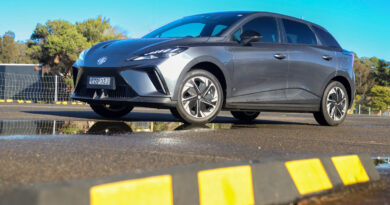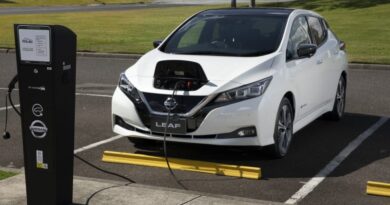Why Hyundai’s Ioniq 5 N is the track EV you’ve waited for
Can a performance electric car deliver the same thrills, driver involvement and engagement as a petrol equivalent?
Not right now believes Albert Biermann, Executive Technical Adviser of Hyundai’s increasingly impressive N division, but good grief they’re trying.
In 2023, Hyundai will introduce its first fully electric performance car, the Ioniq 5 N. It’s still in development ahead of production starting in (approximately) August 2023, but much of its componentry – and driving thrills – are found in the brand’s bonkers 430kW/740Nm RN22e ‘rolling lab’ prototype.
That means steering-wheel mounted paddle shifters to simulate dual-clutch auto gear changes, performance car sounds (artificial, of course), and a drift mode made possible by Hyundai’s new twin-clutch type rear differential as showcased in the RN22e.

We got to sample the dramatic, aerodynamic RN22e on South Australia’s The Bend circuit (look out for the review and video on December 21), and journalists had the opportunity to discuss with Albert Biermann and Vice President of N Brand Management, Till Wartenberg, the electric future of Hyundai N.
Both are rich with knowledge, passion and opinions. Refreshing, to say the least.
“I haven’t driven all the EVs, but as far as I can tell there’s nothing that comes close to the driver involvement of a traditional high performance car,” said Biermann.
“In (Hyundai) N we don’t talk much about numbers, acceleration, lap time or whatever; it has no big meaning for the N car. It’s about the driving fun, the involvement with the car. The way the car talks to you, and how you interact with the machine.”
How do you make an EV more engaging?
It’s an epic challenge. Much of what enthusiast performance drivers want from their cars are absent in EVs: a true emotional combustion engine note; a multiple-speed gearbox (manual or paddle shift) to take control; and, ideally, being lightweight.
Suggestions are the Ioniq 5 N (and the Ioniq 6 N follow up) will be around 2200kg. Batteries equal weight – and lots of it – as we know, making it very hard for Hyundai N to live up to its three core pillars of being a “corner rascal”, racetrack capable and be an everyday sportscar.

“There can be big people who are talented dancers, right?” Biermann uses as a smart analogy. “Weight is challenging, but we are finding ways for your emotional driving experience, and you start forgetting about the weight in a very short time.
“Petrolheads in the RN22e, I’ve been with them and their whole perception of an EV is changing within one minute of driving.”
The Ioniq 5 N is still being fine tuned, but we’re promised a range of emotive sounds, a virtual gear shift and vibration (when gear shifting), “so we can bring the same exciting emotional experience of a DCT transmission,” said Biermann.
We asked would the Drift Mode as found in the RN22e be in the Ioniq 5 N, and Biermann replied: “That’s easy (to do),” while also saying they were fine tuning software for the production car’s e-LSD. Rest assured, the Ioniq 5 N looks like it’ll be seriously skiddy fun.
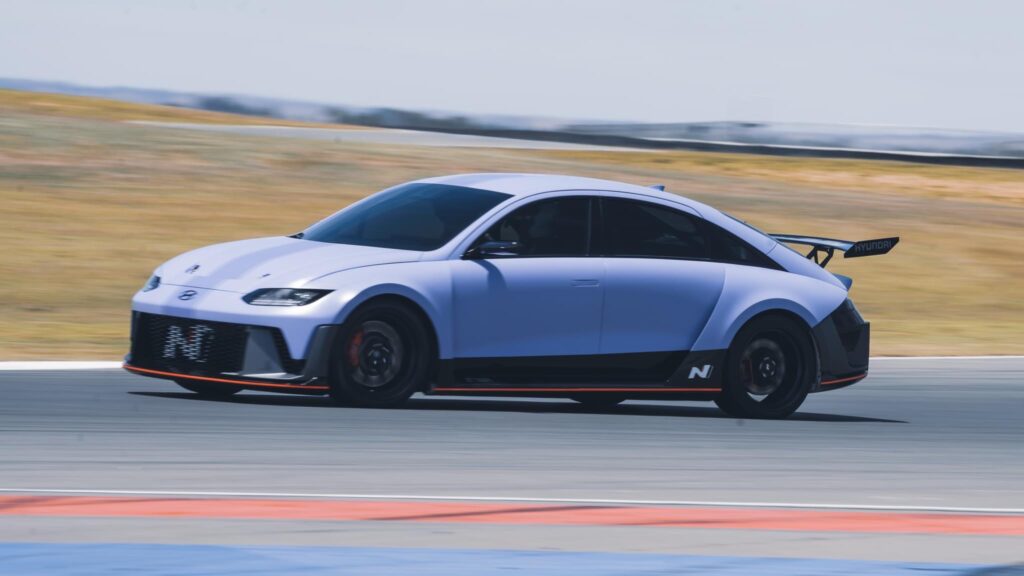
We know the Ioniq 5 N’s weight demands mighty anchors, and the RN22e’s 400mm front rotors with four-pot callipers will be on the production car. Strong regeneration will give the brakes plenty of assistance to ensure they can last at the track, while helping with handling.
Won’t batteries run out quickly at the race track?
Nothing chews through fuel quite like a day at the race track, and the same’s true for EVs.
While you can just top up your petrol tank from a jerry can, no such luck with batteries. Herein lies a massive challenge for Hyundai N.
“How can you make it survive on the track?” asked Biermann. “How can we make the battery survive? We are the lucky guys with the E-GMP platform and 800V silicon carbide inverter. You can go out on full power for 20 minutes (he used two laps of the Nürburgring Nordschleife as an example), then you go to a 350kW charger, then you go out again.”
A line-up of 350kW chargers is wishful thinking at a racetrack, but it shows the potential. At The Bend the RN22e ran for approximately 20 minutes with no loss of performance, and the battery was then charged with a track-side 70kW unit for roughly 45 minutes. Not ideal, but it showed what’s possible now.
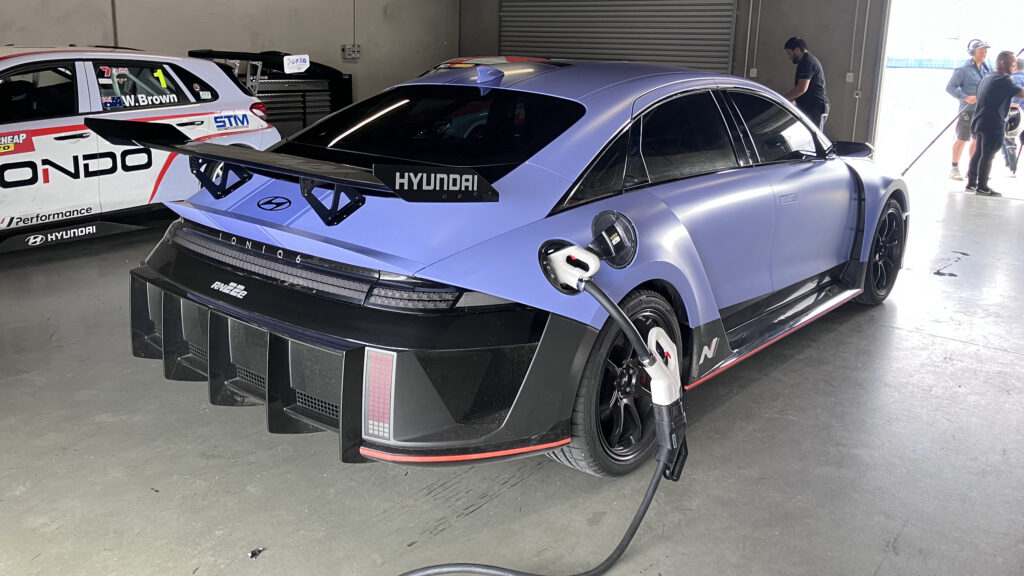
Biermann said improvements were constantly being made to the Ioniq 5 N’s software to reduce battery degradation, including probably offering an endurance mode. This would remove some peak power and allow more time on a track session.
What else can we expect on the Ioniq 5 N?
Biermann and Wartenberg suggested customers would be able to tailor the sound their Ioniq 5 N made, including potentially creating their own with over-the-air updates.
“I’d like it to have as close as possible (a sound) to the traditional high performance car, like the (Hyundai) i30N,” said Biermann. “But also there should be a button to switch it off. When I want to have some fun I want to do the (gear) shifting and have the sound. It cannot be loud enough or dirty enough!”
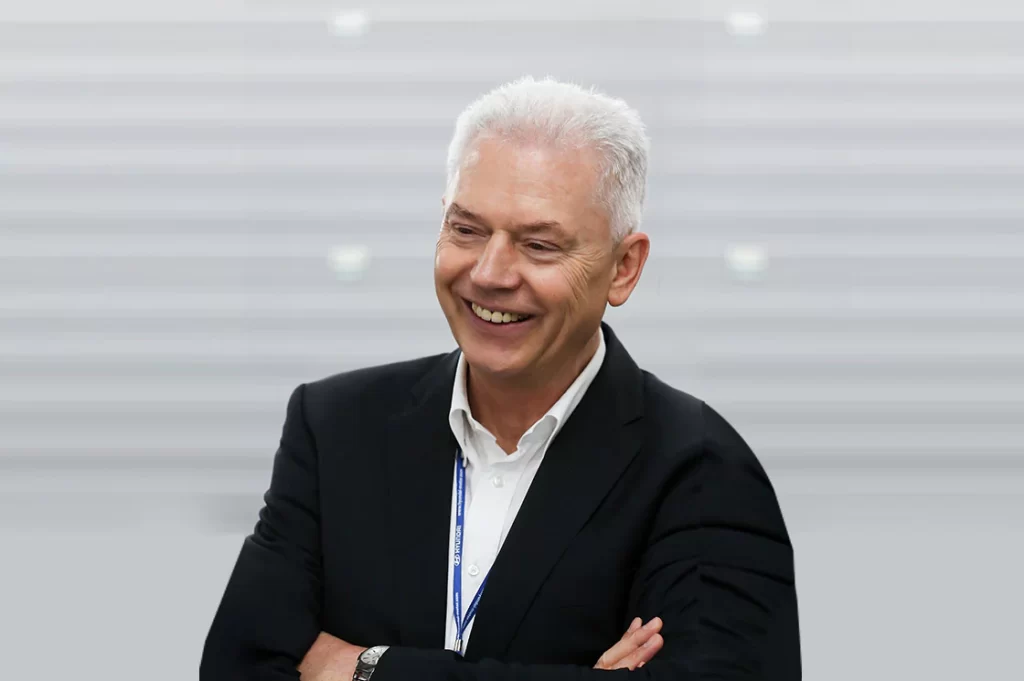
It was also revealed the Ioniq 5 N would only ride about 10-15mm lower than the normal Ioniq 5. They’d prefer to drop it further, but for battery safety it can only be lowered a small amount.
We learnt the N version would have adjustable suspension (not air suspension), different drive modes, and “reasonable tyres” rather than super sticky track-specific rubber to ensure it can be safely driven on wet public roads. Those heading to race circuits will no doubt fit more track-specific rubber.
A bright future for performance EVs?
“Our message to customers is there’s hope for the future,” said Wartenberg, addressing concerns over driver engagement and enjoyment in electric sports cars.
“Fun to drive will not die. With our electrified models you can still have the fun you used to with the combustion engine, but there’s always a time period of acceptance. We need to stay truthful and authentic to our DNA.”
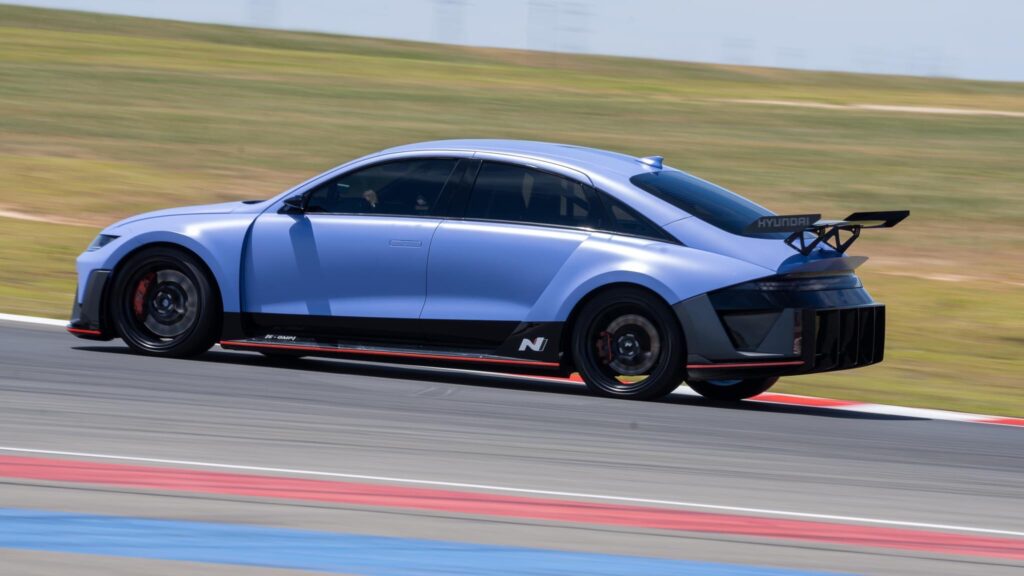
Hyundai’s engineers display an openness and acceptance to the artifice at play with simulated sounds, gear shifts and vibrations. They won’t be to everyone’s taste, but what alternative is there for sporting EVs that want the driver to be more a part of the performance rather than just watching from the stands?
To those of us with a passion for high performance driving, we must appreciate the lengths Hyundai N is going to to up the electric vehicle thrills. If they can work the same wonders they managed with its instant icon i30N and i20N hot hatches, we’re set for some very special performance EVs indeed.
With production of the Ioniq 5 N commencing late next year, Australia would probably expect to receive the model very late in 2023 or early 2024, where no doubt it will be in demand with short supply.
Pricing? With the rapid – but not track focused – Kia EV6 GT at $99,590 plus on-roads, we expect the Ioniq 5 N to be priced similarly, if not a bit more to cover costs of the revolutionary engineering.


